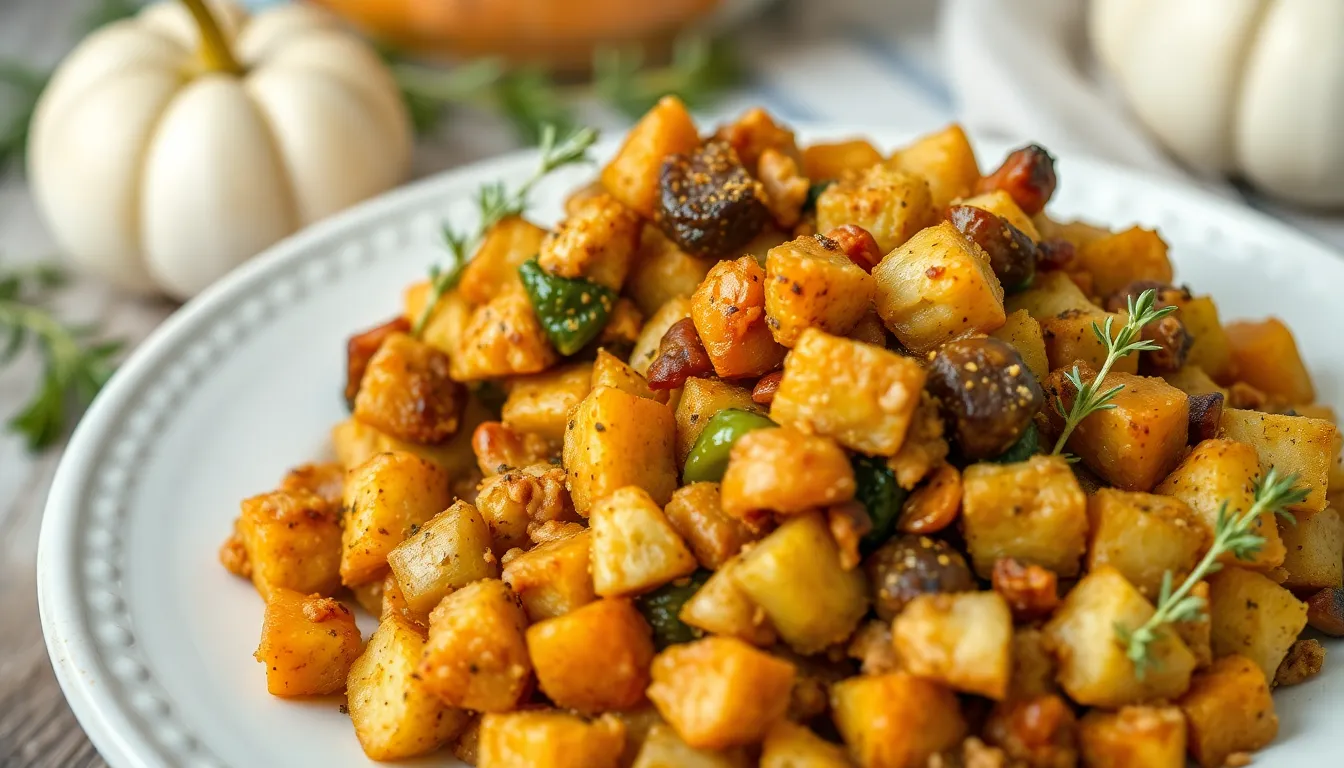How to Make a Vegetable-Based Stuffing for Thanksgiving
Introduction
Thanksgiving is a time for gathering with loved ones, sharing stories, and indulging in a feast that celebrates the harvest. One of the quintessential elements of any Thanksgiving meal is stuffing. Traditionally made with bread and various ingredients, stuffing has become a staple on the dinner table. But as dietary preferences evolve, so too does the need for alternatives that cater to different lifestyles.
Enter vegetable-based stuffing—a flavorful and nutritious option that suits a variety of dietary considerations. Whether you’re a vegetarian, vegan, or simply looking to add more vegetables to your diet, vegetable stuffing can be both satisfying and delicious. Join me as we explore how to create a mouthwatering vegetable-based stuffing that will complement your Thanksgiving feast!
Section 1: Ingredients
1.1 Essential Ingredients
To create a hearty and flavorful vegetable-based stuffing, you’ll need the following essential ingredients:
- Bread: Whole grain or gluten-free options work well.
- Fresh Vegetables: Onions, celery, and carrots are classic choices.
- Herbs and Spices: Sage, thyme, and rosemary add depth of flavor.
- Vegetable Broth: Use low-sodium broth for a healthier option.
- Optional Add-ins: Consider nuts or dried fruits for extra texture and flavor.
1.2 Ingredient Substitutions
Dietary preferences can vary widely, so here are some suggestions for ingredient substitutions:
- Bread: Use gluten-free bread for a gluten-free option.
- Nuts: Replace nuts with seeds (like sunflower or pumpkin seeds) for nut-free recipes.
- Herbs: Fresh herbs can be substituted with dried herbs; just reduce the quantity to one-third.
- Vegetable Broth: For a richer flavor, use homemade vegetable broth.
HTML Table: Ingredient List
| Ingredient | Quantity | Notes |
|---|---|---|
| Bread | 4 cups, cubed | Use whole grain or gluten-free |
| Onion | 1 large, diced | Yellow or white |
| Celery | 2 stalks, diced | For crunch |
| Carrots | 2 medium, diced | Optional for sweetness |
| Vegetable Broth | 2-3 cups | Low sodium preferred |
| Herbs | 1 tbsp each | Sage, thyme, rosemary |
| Nuts/Dried Fruits | (Optional) | Choose your favorites |
Section 2: Preparation Steps
2.1 Prepping the Vegetables
Preparing your vegetables is a crucial step in ensuring even cooking and flavor distribution in your stuffing. Here’s how to do it:
- Dicing: Aim for uniform pieces so they cook evenly. A good size is about 1/4 inch.
- Sautéing: In a large skillet, heat a tablespoon of olive oil over medium heat. Add the diced onions first, cooking until translucent (about 5-7 minutes). Then, add the celery and carrots, sautéing for an additional 5 minutes until they are slightly tender.
- Seasoning: During the last minute of sautéing, sprinkle in some salt, pepper, and your chosen herbs to infuse the vegetables with flavor.
2.2 Preparing the Bread
The bread is the backbone of stuffing, so you’ll want to ensure it’s prepared correctly. Here’s what to do:
- Drying Out Bread: If using fresh bread, cut it into cubes and leave it out overnight to dry. Alternatively, you can toast the cubes in a 300°F (150°C) oven for about 15-20 minutes, turning halfway through.
- Ready-Made Stuffing Mixes: If you’re short on time, feel free to use a ready-made stuffing mix. Just be sure to check the ingredient list for additives or allergens, and adjust your vegetable and broth quantities accordingly.
2.3 Combining Ingredients
Combining your ingredients is the final step in creating your delicious stuffing. Follow these instructions:
- Mixing: In a large mixing bowl, combine your sautéed vegetables with the dried bread cubes.
- Herbs and Broth: Add in the herbs and slowly pour the vegetable broth over the mixture. Start with 2 cups and add more until it reaches your desired consistency. The stuffing should be moist but not soggy.
- Tasting: Before baking, taste the mixture and adjust the seasoning with salt and pepper as needed.
Section 3: Baking the Stuffing
3.1 Preparing for Baking
Once your stuffing is combined, it’s time to bake it to perfection:
- Greasing the Baking Dish: Preheat your oven to 350°F (175°C). Grease a 9×13 inch baking dish with olive oil or cooking spray to prevent sticking.
- Transferring the Mixture: Spoon the stuffing mixture evenly into the prepared baking dish. Press it down gently but do not compact it too much.
3.2 Baking Instructions
Now it’s time to bake your stuffing:
- Covering: Cover the dish with aluminum foil to retain moisture for the first half of baking.
- Baking Time: Bake for 25 minutes covered, then remove the foil and bake for an additional 15-20 minutes, or until the top is golden brown and crispy.
3.3 Serving Suggestions
Once your vegetable-based stuffing is out of the oven, it’s ready to be served. Here are some ideas:
- Pairing: Serve it alongside your favorite Thanksgiving dishes, such as roasted vegetables, cranberry sauce, or a savory gravy.
- Garnishing: Top with fresh herbs like parsley or thyme for a pop of color and flavor.
- Storing Leftovers: Leftovers can be stored in an airtight container in the fridge for up to 3 days. Reheat in the oven or microwave before serving.
Conclusion
Creating a vegetable-based stuffing for Thanksgiving is not only a great way to include more vegetables in your holiday meal, but it can also be a delightful experience for all your guests, regardless of their dietary preferences. With its rich flavors, delightful textures, and warm, comforting aroma, this stuffing will surely become a new tradition at your Thanksgiving table.
So, gather your ingredients, invite your loved ones into the kitchen, and make this delicious vegetable-based stuffing together. Here’s to a healthy, happy, and fulfilling Thanksgiving filled with laughter and love!




